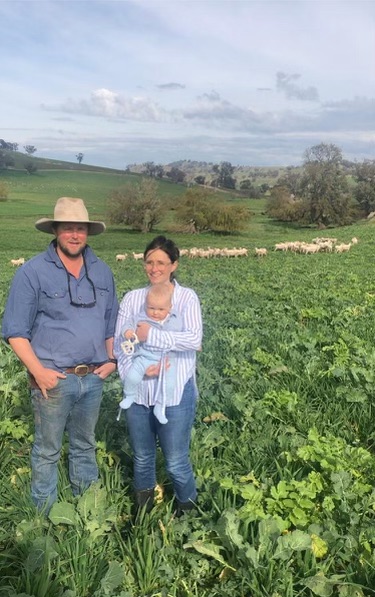PRODUCER CASE STUDY |
|
|---|---|
On-farm snapshot |
|
Name/s |
Nick and Pen Gay, 'Heulen Pastoral Company' |
Location |
Hovells Creek, NSW |
Area in hectares |
3,800 ha |
Enterprise |
Self-replacing Merino ewe flock and first-cross (Merino x Border Leicester) production |
Livestock |
10,000 ewes joined 300 Angus breeders |
Pastures |
Native grasses with sub-clovers, perennial pastures and annual fodder crops |
Soils |
Granite with some basalt |
Rainfall |
650mm |
Lessons learned |
|
A combination of good genetics and managing for optimum performance are the best ways to ensure producers can meet their breeding objectives.
That's the strategy producers Nick and Pen Gay have been following for several years to improve turn-off weights and to get their ewe lambs to joining weights earlier in their Merino and first-cross flock.
"We knew looking at the top performers in the livestock industry that there was an opportunity to increase productivity with genetics, but it needs to be matched with management to see your stock really do well," Nick said.
Selecting genetics
Before purchasing genetics, it's important producers have a firm understanding of Australian Sheep Breeding Values (ASBVs) to set a breeding objective that's going to give them the best outcome and address individual challenges.
"The language of genetics can seem complex, but with the correct advice, commercial producers can develop a good understanding of it and begin applying it to lift their own flock performance," Nick said.
For the Gays, their Merino breeding objective is focused on early growth, carcase traits, quality of wool cut and a plain breech (which has helped them stop mulesing).
For the first-cross enterprise, the breeding objective also focuses on growth and carcase traits, along with number of lambs weaned.
"I believe the low-hanging fruit in a Merino enterprise located in a high rainfall and high value per DSE area is getting ewe lambs in lamb, and for us to do so, we needed more early growth and some carcase for the tougher seasons – but breeding objectives will be different for everyone," Nick said.
Being sale ready
Nick said foremost to choosing good genetics is ensuring your stud of choice has strong data integrity.
"For me to have confidence that the animals I'm spending money on are going to be suitable for our operation, the studs need to have recorded data on all their animals, which ensures the accuracy of their breeding values," he said.
Once a stud has been selected, preparation before sale is key to ensure producers select the right animals on the day.
"Both our Merino and Border Leicester studs provide data on their animals in an Excel spreadsheet online, so I'll always go through these before a sale and sort by the traits I'm looking for," Nick said.
"I'll then rate sheep according to those traits, which helps me work out a price range I'm willing to go to and means I'm not having to analyse over 250 rams before the sale starts.
"On sale day, it's a matter of finding our pre-selected animals and overlaying phenotypes, structure and wool types of these sheep to make our final decision.
"One of the most challenging things is passing up on an animal that has all the ASBVs you're after, but you see the phenotypes aren't right.
"At these times, you have to be able to put a line through it and move on," Nick said.
In recent years, the Gays have also put more focus on year-round management of their purchased genetics to ensure their performance is optimised.
Manage first, but keep genetics in the picture
For Nick, good genetics don't outweigh good management – but they can certainly benefit from it.
"Chasing a particular ASBV without managing your flock to express those genetics means you probably won't see much value added to your enterprise," he said.
"Over the last few years, we've been implementing management principals from a BredWell FedWell workshop I completed, including condition scoring, scanning for multiples and allocating feed to pregnant ewes appropriately.
"Managing for optimum performance should always be the goal and will undoubtedly help the genetics in your flock manifest and take you towards your breeding objective."







